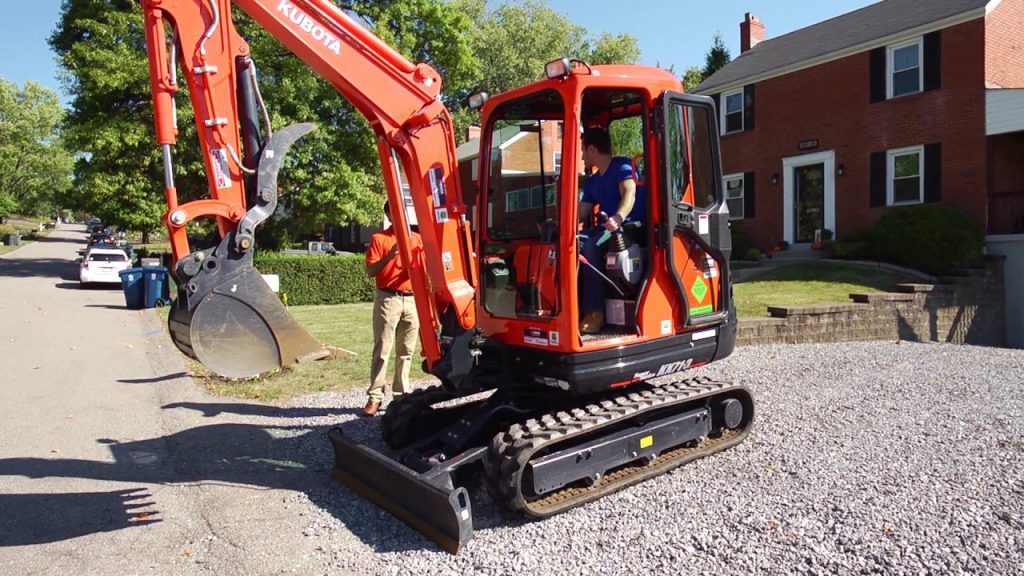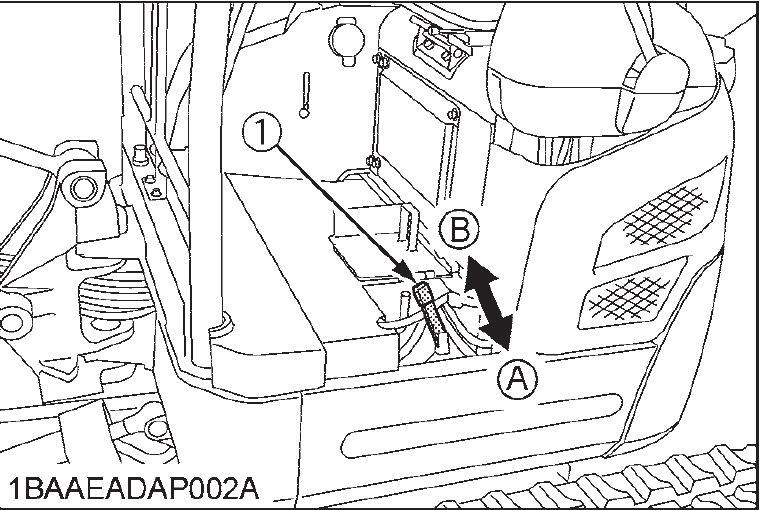

I’m writing about how to change controls on kubota excavator. As you’re here, I guess you found changes on your own machine. But moving to a different location can also be very tiring – and with the vehicle it is no exception. Therefore, you should take all necessary precautions when changing controls on your kubota excavators.
Step 1 – Preparing the kubota excavator
The thing I like to do is make sure I have the appropriate tools and knowledge before I get started. I always bring a second set of eyes, usually my wife, when she can’t come with me, I look for someone else that can fill that role.
In my case I would be working on a Kubota excavator. So first question is, does the owner have an operator’s manual? If not it might be a good idea to track one down on ebay or Amazon. It will give you the maintenance schedule and specs for the machine. If you don’t have one it’s going to be important to know what fluids and what color they are to top off. Also it’s a good idea to know how much oil it takes and how much hydraulic fluid it takes before you get started. Another thing with out a manual is if you’re not familiar with the machine, getting started might be hard for both you or your helper. So if you don’t have the manual make sure you know where all of the controls are located and what they do.
Step 2 – Accessing the kubota excavator Control Valve
When it comes to the kubota excavator controls, there are a few things to remember. First, you’ll need to know how to access these controls as well as how to use them. This is important because every machine is different and so are their controls. If you are new to operating excavators, it may take some time for you to get used to the controls. However, with enough practice, anyone can become an expert at operating an excavator.
The first thing you should know about the kubota excavator control valve is that its location varies from manufacturer to manufacturer. Some kubota models have control valves located on the side of the cab while others have their control valve located on top of their cab. You will also find that some kubota models have a separate control valve while others don’t. When it comes to accessing these valves, most manufacturers place them in easily accessed areas such as the driver’s seat.
Step 3 – Removing the kubota excavator Control Valve
If you are a new excavator operator, and you have just started working with the kubota excavator, you will need to get used to the controls. The kubota excavator control valve is a very important part of the entire machine. This is where all the action happens. If your control valve is not functioning properly, you will not be able to control your machine. You need to know how to remove and install it, so that you can perform basic maintenance on your machine.
The first step in removing the control valve on your kubota excavator is to make sure that all the bolts holding it in place are loosened up enough that they can easily be moved out of place. Once this has been done, you will want to remove them one at a time until they are all removed. You should then take a flathead screwdriver and use it to remove each bolt from its location.
This will allow you to remove each one individually until they are all removed. It will also make it easier for you to locate the replacement bolts once you have removed them from their original locations. In order for these bolts to fit properly into the new holes in your machine, you need to make sure that they fit snugly into their new locations.
Step 4 – Disconnecting and kubota excavator Labeling Cylinders
If the water level is below the top of the cylinder, disconnecting and kubota excavator labeling cylinders is simple. If it is above the top of the cylinder, shut off the main power to your hot water tank.
To disconnect, remove all connections and fittings from the cylinder. Label each connection with its location and function for reassembly. Drain all water from the cylinder by loosening a drain valve at the bottom of the tank.
Next, remove the electric heating elements from their sockets in the side of the cylinder. Check each heating element with a meter or lamp tester to make sure they are not live (you should see no light) before removing them. Use an appropriate size wrench to remove these elements; if you must replace them later, replace them with elements of equal wattage and voltage to avoid overloading your circuit.
Remove both hot and cold supply pipes from the top of the cylinder; label each so that you can reconnect them correctly later. If you must replace any pipe fittings, use those with equal or slightly larger bores than those you removed, to avoid creating a blockage or restriction in your system.
Step 5 – Installing Your New kubota excavator Control Valve
Install the new valve and make sure that it fits securely. Make sure that you don’t get the valve mixed up with the other valves in your system because this can lead to problems.
Once you have the new valve installed, you will want to make sure that it’s properly secured and ready to go. You’ll need to check if there are any leaks from where the valve is installed and then check if the hose is connected properly. Check for any loose connections or leaks as well.
If there are no leaks, then you can now install the new pump and connect it to the water supply. Once that’s done, you can connect your pressure gauge to the pump so that it will measure how much pressure is in your system. If there’s too much pressure then you can adjust it accordingly.
Now all you have to do is wait for some time before turning on your system so that everything can settle down and start working properly again!
Step 6 – Reinstall the kubota excavator Cylinders
1. Lubricate the inside of the cylinder with hydraulic oil, then install the new seal using a mallet and block of wood, making sure it’s seated properly in the housing.
2. Install a new O-ring on the piston.
3. Coat both sides of the piston with a thin film of hydraulic oil, then slide it into the cylinder bore, tapping it lightly with a wooden mallet if necessary to help seat it properly in its bore.
4. Slide the other side of the cylinder assembly back onto the piston rod and turn it until you feel positive resistance when turning it by hand. The factory pre-load on this assembly is 90 foot-pounds (ft.-lbs.) so use a torque wrench to tighten it to 90 ft.-lbs., then make sure that you can still rotate it freely by hand. It should not be loose or sloppy, but neither should you have to use excessive force to turn it by hand.
5. Reinstall the connecting lines and reservoir as before, then open all three valves on the control manifold and check for any leaks at these connections or at any other potential leak points in your system
Step 7 – Final Steps to Change Controls on Kubota Excavator
After you have disconnected the hydraulic hoses, you will need to remove the control valve. This is located directly in front of the seat, on top of the excavator’s chassis. You will need to remove the control valve mounting bracket, using a socket and ratchet.
Once the control valve mounting bracket has been removed, you will need to disconnect the throttle cable from the digger’s control lever. To do this, you will need to loosen and remove the nut that holds it in place. Again, a socket and ratchet should be used. The throttle cable can then be removed from the control lever by pulling it out.
You can then remove the hydraulic hoses leading to either side of the control valve itself. These are secured by nuts which hold them in place, so they should be loosened by hand and pulled free once they have been disconnected. The hoses can then be pulled away from their connections on either side of the control valve, which can finally be removed from its mounting plate.
The final stage of this procedure is to reconnect all of these parts to their new positions on your Kubota excavator.
Well, it looks like we’ve covered everything there is to know about how to change controls on kubota excavator. I know that was a lot of information and you probably have questions. If you do, just ask them in the comments below and I’ll do my best to get back to you with an answer as quickly as possible. Remember though, I’m just one guy and I only know so much about how to change controls on kubota excavator.
